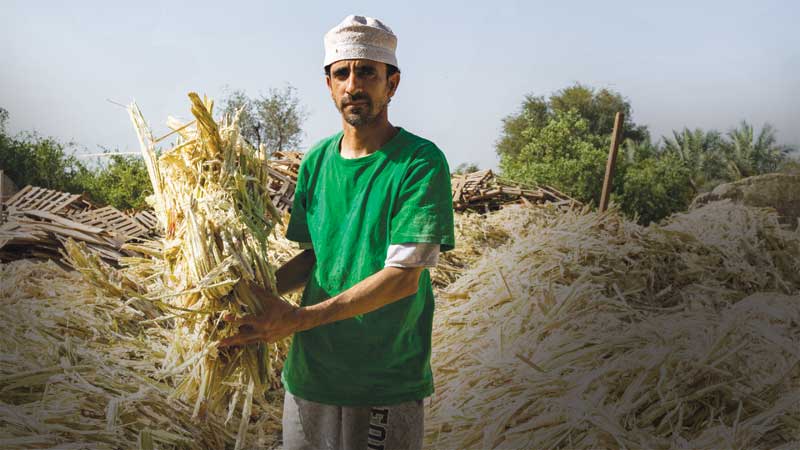

It may not be magic, but the Al Yahyai family in Bahla has a history that is inextricably linked with the production of the Omani Red Sugar that makes Omani Halwa taste better and is just so deliciously different to all others.
Nasser al Yahyai is a farmer on the outskirts of Bahla, who grows Omani garlic, chillies, onions, melons, and oilseed, on a farm that has probably been “in the family” for centuries. He also has herds of camels, cattle, and goats, which are surely enough to keep the cheerful farmer, on the cusp of his fiftieth year and looking much younger, busy. But… for two months every year, the family business turns to sweeter pursuits, and the production of the highest quality, organic, Omani Red Sugar, recognised the world over for its characteristic sweetness and rich red colour.
The cane arrives during the two-month harvest season from the furthest corners of the Sultanate, as far afield as Sohar to the West, Sharqiyah to the East, Muscat in the North, and many parts of the interior, around 200 tonnes in all, each season. The truckloads of incredibly green-tinged cane stalks are unloaded and tagged, as much of the factory’s work, said Al Yahyai, “is on consignment. Meaning we process the sugar for the grower.”
In earlier days, an oxen-driven crusher extracted the sugar juice, but for the last twenty years, two shredding machines separate the cane juice from the fibrous material which is known as ‘bagasse’ dried and recycled as stock feed. The extracted juice, or guarapa, then goes into a sump, from where it is pumped into giant vats every 30 minutes, is heated, and removed to settling trays. At the Izki factory, the process works 24/7 during the harvest season, and the processing is continuous.
The furnaces under the two processing vats at the Al Yahyai factory maintain a regular temperature of around 1000 degrees to heat the sugar cane extract until it has reached the ‘tipping point,’ assessed through knowledge and experience, beyond which each 80 kg vat is considered as purified and ready to be ‘ladled’ out by foremen Malik and Ibrahim. Incredibly, though the vats reach the extremely high temperatures required for the process to occur, they are cool to the touch!
The extract is then carried away and ‘settled’ in huge trays to coagulate and into large blocks, which from this stage of the process are identified as ‘jaggery.’ From here it is cut into whichever size the consignor wishes, bagged in traditional palm frond bags made in Bahla, or bucketed, and held for the client to collect, each having a dedicated production number. Al Yahyai explained that there is an element of ‘leakage’ at this time, but that the result is a pure Omani Red Sugar.
The product is noticeably large-grained, darker, since the molasses content has not been processed out, and vastly different from the white sugar most of us are familiar with, being a ‘raw’ processed but untreated product. This is an age-old process, traditional and organic, but more importantly, if you ask Nasser al Yahyai, “It is both a family business, and a community service and obligation, and we are proud of the status it offers us within our society.”
Omani halwa, for sure, would not be the same using a proprietary product, and Omani red sugar would not be the same within an intensely automated process. You can “taste the difference.” And that, my friends, is just a little more of the renowned Bahla magic at work. Well, sweet magic… Al Yahyai style.
STORY BY RAY PETERSEN
PHOTOS BY LENA PETERSEN
Oman Observer is now on the WhatsApp channel. Click here



